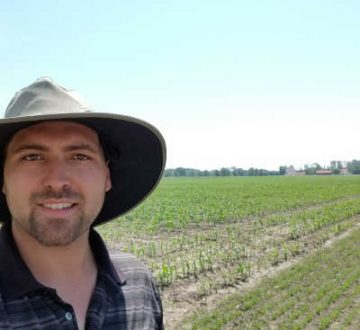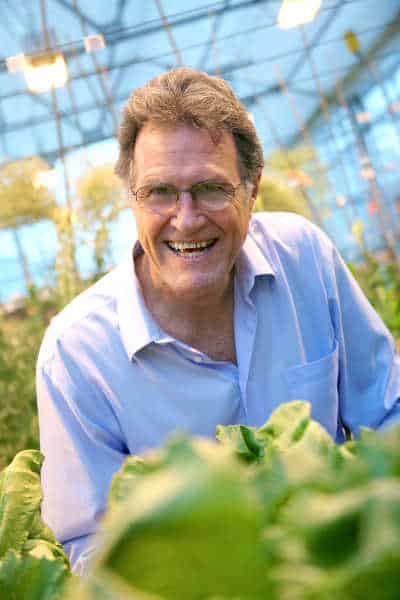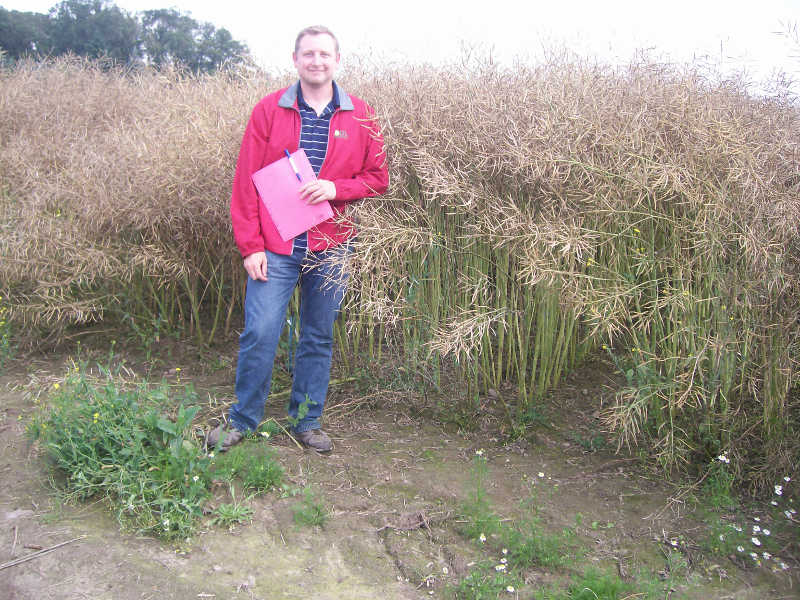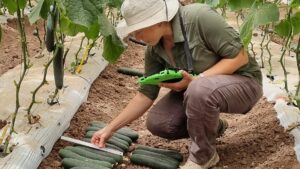Over the past decade, plant breeding and biotechnology have been transformed — as a result, there are a variety of educational paths to be taken.
Combining both art and science, plant breeding has been practiced for thousands of years — more or less since the beginning of human civilization.
Often described as changing the traits of plants in order to produce desired characteristics, plant breeding can be accomplished by many techniques—from simply selecting plants with desirable characteristics for propagation, to methods that make use of the knowledge of genetics and chromosomes, to more complex molecular techniques.
It’s practiced worldwide by everyone from gardeners and farmers to professional plant breeders employed with government institutions, universities, crop-specific industry associations and research centres.
Kent Bradford is director of the Seed Biotechnology Center (SBC) in at UC Davis, located in northern California, approximately 15 miles west of Sacramento. Essentially responsible for overseeing everything at the SBC — with the help of an outstanding staff — he says he won the “job lottery” by getting a position in plant sciences at UC Davis.
“It has perfectly combined my academic/scientific nature with my interest in farming and gardening and my wish to contribute to improving crop production. What I like most is being able to provide valuable educational programs about seed and plant breeding to the seed industry, and see participants expanding their careers in the industry.”
The Seed Biotechnology Center designed the UC David Plant Breeding Academy, looking to increase the supply of professional plant breeders to the industry. It also offers other programs like Seed Business 101, Seed Production, Breeding with Genomics, Program Management for Plant Breeders, and Seed Biology and Quality.
Many Changes, More Opportunities for Education
The plant breeding industry has undergone a great transformation — particularly in the last decade — largely due to the virtually universal adoption of marker-assisted breeding methods.

“The decreasing cost of genome sequencing has enabled the sequencing of many more crops, the development of genetic maps, and characterization of diversity and DNA-based markers that greatly improve the speed and specificity of plant breeding,” Bradford explains. “The ability to use genetic engineering has been a major focus, along with marker-assisted and genomics-based methods, in the major agronomic crops — but the regulatory and marketing hurdles have largely stymied those methods in specialty crops in the last decade. Instead, they have moved heavily into marker-assisted methods.”
Evan Gillis is a canola breeder at DL Seeds in Morden, Manitoba. In 2010, he started at the small seed company — which creates and produces canola hybrid varieties — after completing a bachelor of science degree in agronomy and a master’s degree in plant pathology from the University of Manitoba.
Over the past seven years, he says the biggest change he has seen in the industry is the number of different traits or individual genes being worked on at a commercial level.
“When I started, we were basically focused on a few herbicide tolerance traits and now we are looking at how to incorporate dozens of genes for disease resistance, herbicide tolerance, oil quality, et cetera,” he recalls. “This has changed the structure of programs to deal with the amount of crossing and organization required. The technology is also constantly changing and becoming more available at a practical breeding level. Use of markers and genomic analysis in breeding is always increasing.”
As a result, Gillis says that during his first two years at DL Seeds, he was exposed to all aspects of the breeding program where he basically did a bit of everything.
“This helped me to gain a great understanding of our operations and, in 2013, I took on more responsibility for the breeding program,” he explains. “As my past training was in pathology, I didn’t have a strong background in breeding and genetics theory other than on-the-job training. However, the Plant Breeding Academy course through UC Davis provided me with a strong foundation of genetics and statistics and exposure to many different ideas and breeding programs.”
In his current position, his main role is in “core” breeding, which involves the development of new inbred lines, creating hybrids and testing them in canola.
“The main focus is yield, maturity, lodging resistance and seed quality traits, but other trials such as disease resistance have become increasingly important,” Gillis explains. “This requires the setup and analysis of several different types of field trials, including yield testing at several locations and disease nurseries. Analyzing the trials and being the first to see the data for new products is probably the best part of the job. I am also responsible for female development in our hybrid systems. Helping develop a new product which provides something new or better to our marketing partners and ultimately growers is also very rewarding.”
Curtis Van Laecke, head of research and product advancement at Horizon Seeds in Courtland, Ont., says what he likes most about plant breeding is having complete control over the development and the ability to choose which genetics to advance.
“Genetically modified traits have seen a large area of change over the past decade, which has had a direct impact to how plant breeding is executed. It is definitely more precise these days as we talk about gene mapping and trait integration versus conventional plant breeding. Also, the speed to commercialization has also changed as the landscape has become highly competitive.”
Many Educational Paths
Van Laecke, like both Gillis and Bradford, also graduated from the Plant Breeding Academy at UC Davis after earning a bachelor of science degree in plant science, with a minor in agriculture from the University of Guelph.

“I cannot say enough about the programs at the University of Guelph,” he says, when asked what schools or programs he would recommend to those interested in pursuing a career in plant breeding.
“I would also say you don’t have to specialize in agriculture, but rather focus on plant sciences and other supporting areas such as plant pathology, statistics, etc. Additionally, continuing education — not only for students — but also those in today’s workforce is important as science continues to evolve. We can never know enough about what we do, and it is important to want to continue to learn and better your overall depth of knowledge.”
Bradford concurs and adds, “The most direct path is through degrees in plant biology or genetics and graduate study in breeding. Plant pathology or biotechnology are also relevant undergraduate programs for plant breeders. There are positions for persons with master’s degrees, but increasingly, breeders for larger companies run big programs and more often have PhDs.”
In addition to the aforementioned UC Davis, Bradford also recommends other universities with excellent programs such as the University of Wisconsin, University of Illinois, Cornell, North Carolina State, University of Florida, Texas A&M, Iowa State, Wageningen (The Netherlands) and many others, depending upon the crop.
It also valuable to participate in seed trade organizations, including the Canadian Seed Trade Association, American Seed Trade Association, International Seed Federation, and local state and provincial seed organizations.
“It is an extremely exciting time to be a plant breeder,” adds Bradford. “The tools available make it much more efficient to combine single and multiple traits into elite germplasm, which means that breeders can see much more of their work come to fruition and commercialization in their careers.”
What’s Next?
As for where the plant breeding industry is headed in the next two to five years, Bradford says in the short term, the expanding application of new genome-based breeding methods will transform the way breeding is done and enable companies to more quickly respond to changing conditions (climate, pests, diseases) and improve product quality (flavour, nutrition).
“Two critical events currently in progress are a proposal to change the regulations governing genetically engineered varieties, and the federal GMO labeling law passed last year in the U.S. If the former defines genetically engineered products to not include certain applications of gene editing technologies, then we will see a lot of research investment in that area, particularly in specialty crops, as it will lower the regulatory and marketing hurdles and costs.”
Similarly, he says if these improvements (which could be done with conventional methods, only much more slowly and with less specificity and efficiency) are not designated as being GMOs, they will not be labeled and will not suffer negative perceptions that will likely be associated with such labels.
“The coming year may be the most critical one in the last three decades for the future of plant breeding, depending on how these two factors work out.”













